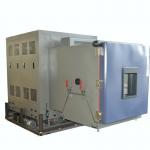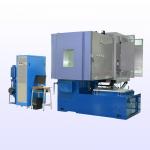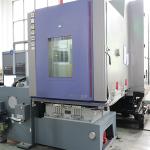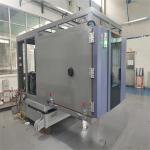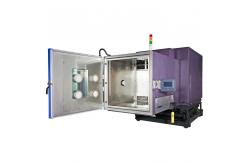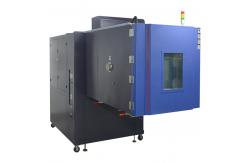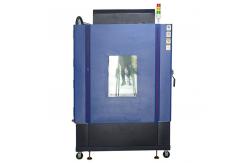In the rail transit industry, the seamless operation of
communication signal equipment is the linchpin of safe and
efficient transportation. The Custom Vibration Shaker combined with
a Climatic Test Chamber is a cutting - edge testing solution
tailored to the unique requirements of rail transit communication
signal equipment. This integrated system enables manufacturers and
maintenance teams to subject these critical components to a
comprehensive range of mechanical vibrations and climatic
conditions, replicating the challenging environments they encounter
throughout their service life. This advanced testing system is meticulously designed for rail
transit communication signal equipment, including but not limited
to train - to - wayside communication devices, track - side signal
transmitters and receivers, onboard control systems, and
communication cables. The primary purpose is to evaluate how these
components perform and endure under the combined stress of
mechanical vibrations and diverse climatic factors. By simulating
real - world scenarios such as the vibrations generated during high
- speed train travel, temperature fluctuations in different seasons
and geographical locations, and humidity variations in tunnels or
coastal areas, manufacturers can identify potential weaknesses in
the design, improve product quality, and ensure the reliable and
continuous operation of rail transit communication signal systems. - Precise and Tailored Vibration Generation
- The custom vibration shaker is engineered to generate a wide
spectrum of vibration frequencies, typically adjustable from 1 Hz
to 2000 Hz. This broad range allows for the simulation of various
types of vibrations that rail transit communication signal
equipment may experience. Low - frequency vibrations can mimic the
steady - state vibrations during normal train operation, while high
- frequency vibrations can represent the sudden impacts or
vibrations caused by track irregularities or train - to - train
interactions. The vibration amplitude is precisely controllable,
with a range of 0.1 mm to 20 mm (peak - to - peak), enabling the
reproduction of different levels of vibration intensity.
- It can generate vibrations in multiple axes, including vertical,
horizontal, and rotational axes. Rail transit communication signal
equipment is often exposed to complex multi - directional forces.
For example, equipment installed on the train may experience
vertical vibrations from the movement of the wheels on the tracks,
horizontal vibrations during acceleration and deceleration, and
rotational vibrations due to the train's turning. The multi - axis
vibration capability of the shaker provides a more realistic
simulation of these actual mechanical stresses, helping to identify
potential weak points in the equipment's structure and internal
connections.
- Highly Customizable Vibration Profiles
- Operators have the flexibility to create highly customized
vibration profiles based on specific test requirements. These
profiles can incorporate continuous vibrations, intermittent
shocks, or complex sequences that mimic the exact vibration
scenarios rail transit communication signal equipment is likely to
face. For instance, a profile can be designed to simulate the
vibrations during a typical rail journey, including the start - up,
cruising, and braking phases, as well as the vibrations during
emergency stops or when passing through areas with poor track
conditions. The ability to customize these profiles ensures that
the testing is as realistic as possible, closely replicating the
conditions in the rail transit environment.
- Robust and Durable Design
- Built with high - quality materials and advanced engineering, the
custom vibration shaker is designed to withstand the rigors of
continuous testing. The shaker's frame is constructed from heavy -
duty steel, providing a stable and rigid platform for generating
vibrations. The vibration - generating mechanism is engineered for
long - term reliability and precision, ensuring consistent and
accurate test results over extended periods. Additionally, the
shaker is designed to handle a wide range of payloads, from small
communication modules to larger signal control units, accommodating
the diverse sizes and weights of rail transit communication signal
equipment.
|
